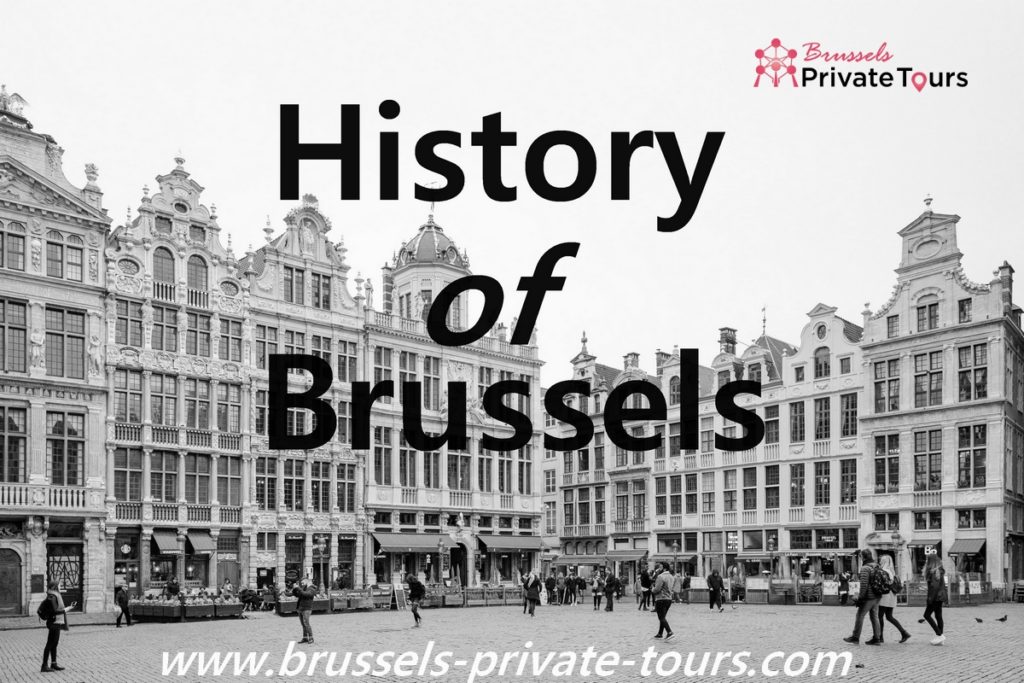Introduction
The official foundation of Brussels was usually in 979, when the Duke of Lower Lorraine ordered the construction of a fortress of Otto II, Emperor of the Holy Roman Empire, who wanted to defend this part of the empire.
The fortress on the small hill of Coudenberg was built between the 11th and 12th century and the Duke of Brabant made its residence through this age. That’s when Brussels started to grow and attract more citizens to the city.
The city has become an important shopping center thanks to its location on the road from Bruges to Cologne. It has become annual champagne fairs, held in Northern Europe. At the end of the 17TH century, it quickly converted into the part of the Hanseatic League (a trade confederation).
Middle Era
First fabrics and after that material and embroidered works of art offered route to a high society in Brussels, known as Lineages. These were well off families that mutual the metropolitan power in the area (fundamentally the same as how the towns were sorted out in the Crown of Castile) and were given sure business and political benefits by the Duke of Brabant.
There is proof that in 1306 there were seven unique genealogies that made up the gentry of Brussels. The different ancestries would pick a échevin and jury every year in the stir of having heard the considerations of the Duke of Brabant’s personals.
The échevin and jury would change a seemingly endless amount of time after year to avert one of the genealogy families having control over the others. This clearly didn’t prevent them from quarreling and during the fifteenth century, the showdowns between the Van Lombeke and the Van lair Heetvelde families wound up famous.
The Lineages would not impart their capacity to the lower classes and the craftsmans. As an outcome, toward the start of the fourteenth century the weavers, craftsmans, dyers, those that cleaned the fleece and all the tradespeople of Brussels rebelled against these seven families.
The uprising drove the Lineages to yield the tradespeople the privilege to shape organizations and take certain part in the choices of the city.
In 1421 a metropolitan constitution was passed whereby the power was shared between the seven Lineages and the societies that were separated into Nine Nations.
Spanish Episode
At the point when the County of Brabant and Duchy of Burgundy became up one (Brussels), Brussels turned into the area’s capital. In 1477 Brussels turned out to be a piece of the Spanish Empire and it turned into the base of the governors of Flanders.
In 1609 the northern United Provinces wound up free and Brussels turned into the capital of the Habsburg Netherlands. Inquisitively, the head Charles V relinquished as King of Spain in Brussels.
Brussels assumed a significant job in the blessed wars. During the thirteenth century it was one of the center purposes of the sin of the Beghards. During this period Brussels wound up famous for its resistance and this is the reason Desiderius Erasmus chosen to move to the city. In later years, Lutheranism and Calvinism would turn out to be broadly acknowledged in Brussels.
In 1567 the political and strict clashes spread all through Flanders and Philip II of Spain sent the Duke of Alba to put a conclusion to these conflicts and wound up popular for the tenacious suppression he did in the locale. He initiated the Council of Troubles to rebuff the pioneers of the political and strict issues in the Netherlands. This chamber caused an extraordinary discomfort among the occupants and was one of the reasons for the Eighty Years’ War or the “Dutch War of Independence”.
When William I, Prince of Orange rebelled against Spain, helped by the privateers, Brussels bolstered the autonomy of the United Provinces.
The city sunk into a monetary emergency because of the numerous long stretches of political insecurity and didn’t recoup until Isabella Clara Eugenia, little girl of Philip II of Spain wedded the decision Archduke of Austria, Albert VII and lived in Brussels.
The Treaty of Utrecht was marked in 1713 and Brussels was given over to Austria.
Capital of Belgium, Brussels & The Independence.
In 1789 the Belgians rebelled against the Habsburg Emperor Joseph II and built up the United Belgian States a year later. Under ten years after the fact, in 1795, the Napoleonic soldiers caught the city and attached it to France until 1814.
In 1815 Napoleon was crushed in Waterloo and Brussels joined the United Kingdom of the Netherlands.
On 25 August 1830, the Belgian upheaval occurred in Brussels, which prompted the nation’s freedom. The principal lord of the Belgians, Leopold I, was delegated in 1831 and the city was picked capital of Belgium.
Brussels has developed consistently, with the exception of during World War I and II, when the German soldiers involved the city. The city’s significance is obvious as it was picked as the home of three World Fairs, the first in 1897, at that point in 1910 and in conclusion in 1958. During the last Expo, the Atomium was manufactured, which has progressed toward becoming alongside the Manneken Pis, the two fundamental images of Brussels.
Brussels is by and by an amazingly cosmopolitan city and is home to the European Parliament, the European Commission and the European Council. Besides, it is additionally the seat of NATO and has turned into a judge between the beyond reconciliation Flanders and Wallonia.

Comment (0)